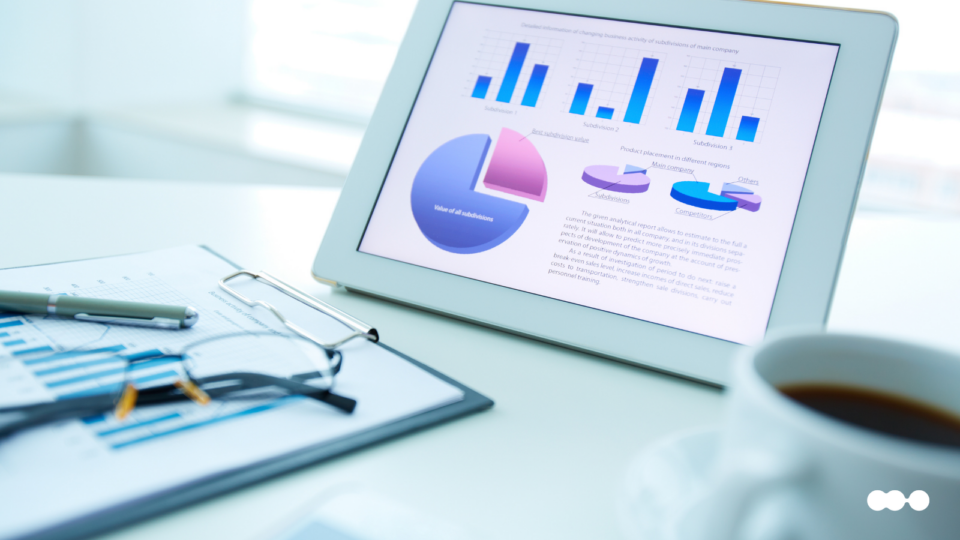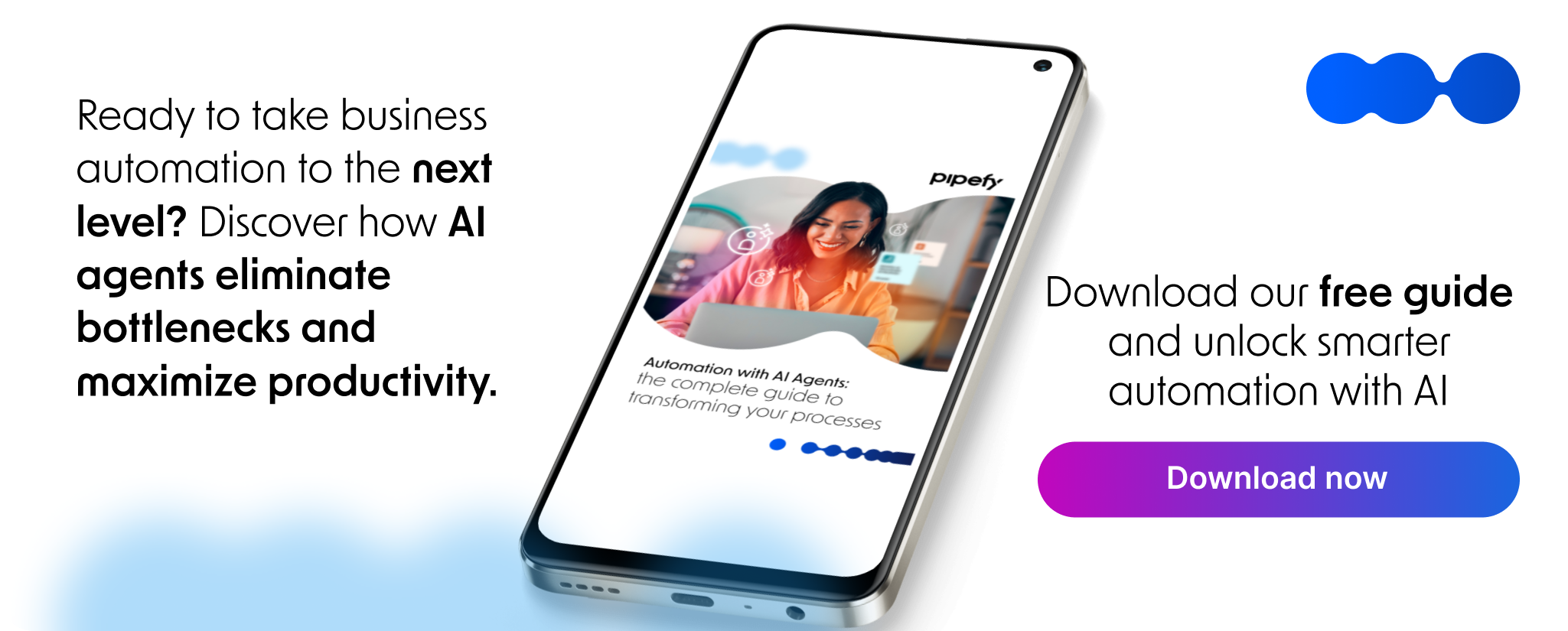
Comparing financial reports across periods, departments, or business units is a routine task in finance operations. However, when performed manually, it often becomes time-consuming, inconsistent, and error-prone.
In sectors such as financial services, insurance, and consumer goods, the ability to extract insights from financial statements quickly and reliably can influence strategic decisions, risk assessments, and budget management.
With the growing maturity of AI Agents and the adoption of low-code/no-code automation platforms, this process can now be executed with greater speed, consistency, and transparency.
This article explores how AI can enhance the report comparison process, discusses practical use cases, and explains how to begin using Pipefy’s free template tailored for this workflow.
Why Comparing Financial Reports Is Still a Bottleneck
Despite advancements in digital transformation, many finance teams continue to rely on spreadsheets, emails, and manual reconciliation steps. This often results in:
- Inconsistent data sources and naming conventions
- Delayed consolidation across business units or regions
- Human errors in formula setup and data interpretation
- Lack of standard approval flows or validations
- Limited audit trails and visibility for compliance
As reporting cycles accelerate and regulatory requirements increase, these inefficiencies can lead to operational setbacks and hinder decision-making.
What Changes with AI Agents in Report Comparison?
AI Agents are digital workers designed to handle rule-based tasks autonomously. In the context of comparing financial reports, they can:
- Collect and standardize financial data from multiple formats
- Apply business rules to run structured comparisons
- Highlight discrepancies and generate reports automatically
- Trigger workflows when anomalies are detected
- Document every action for auditability and compliance
By structuring and automating these comparisons, finance professionals may dedicate more time to analysis and scenario planning, rather than to administrative reconciliation.
Read more: No-code AI Agents Development: Everything your company needs to know

Practical Example: Financial Report Comparison in a Mid-Sized Insurance Company
Let’s consider a hypothetical scenario: a mid-sized insurance firm receives financial reports from 10 regional offices monthly. Each office uses a slightly different spreadsheet format, which requires two analysts to manually consolidate and compare figures before sending them to leadership.
To address this, the company configures Pipefy’s Comparison of Financial Reports template. The finance team defines a submission form with standardized fields and rules. An AI Agent extracts the data, applies comparison logic, flags variances, and routes them to the appropriate reviewer.
With this structure in place, the report cycle time drops from five business days to one, while improving consistency and reducing the margin for error.
Before and After: Financial Report Comparison Automation
| Metric | Manual Process | With Pipefy and AI Agents |
| Consolidation cycle time | 4-6 days | 1 day or less |
| Staff required | 2-3 analysts | 1 reviewer |
| Discrepancy identification | Manual, prone to errors | Automated with rules |
| Audit trail availability | Minimal | Full traceability |
| Consistent formatting | Inconsistent | Enforced via forms and logic |
Benefits of Automating Financial Report Comparison
Using AI Agents to compare financial reports can result in measurable improvements, such as:
- Faster turnaround times, especially during close cycles
- Improved accuracy by reducing manual intervention
- Greater visibility into status, issues, and timelines
- Consistent standards across regions, periods, and entities
- Lower risk through documentation and policy enforcement
These outcomes support not just the finance department but also other areas that rely on timely and reliable financial insights.
Read more: AI Agents in Practice: Get to know some use cases to save time and gain efficiency

Challenges That May Arise During Implementation
Even with flexible automation tools, certain challenges are common when introducing structured automation into financial processes:
- Teams may be unfamiliar with rule-based validation models
- Legacy report structures may need to be adapted or mapped
- Resistance to adopting AI-driven review may exist
- ERP or BI integrations may require initial technical effort
These barriers can be addressed through gradual rollout, user training, and selecting platforms, such as Pipefy, that allow business users to configure and evolve workflows without technical dependencies.
How to Measure Success in Automating Financial Comparisons
Finance leaders typically evaluate the success of automation initiatives through KPIs such as:
- Average cycle time for report comparison
- Reduction in human processing hours
- Percentage of reports with detected anomalies
- Number of reports processed per week or month
- Level of audit readiness and reporting compliance
Tracking these indicators can guide refinement of the workflows and support broader process optimization.
Read more: Advanced Financial Automation: Find out why it’s important to go beyond traditional systems
Future Trends in Financial Reporting and AI
The integration of AI into financial operations is rapidly evolving. According to McKinsey, generative AI could add between $2.6 trillion and $4.4 trillion annually to the global economy, largely through increased productivity and efficiency.
In financial reporting, this may include:
- Automation of complex comparison logic
- Natural language summaries of results for executives
- Predictive variance forecasting
- Seamless connection with ERP and BI platforms
- Flexible alert rules that adapt over time
Companies that adopt these capabilities are likely to gain faster insights and improve governance across financial processes.
FAQ: Comparing Financial Reports with AI
Can AI Agents work with files in different formats?
Yes. They can extract and normalize data from PDFs, Excel, and integrated tools.
Is it possible to customize the comparison rules?
Absolutely. In Pipefy, workflows can be configured without code to match your policies.
How does human review fit into an automated process?
Exceptions or flagged items can be routed to specific roles for review or approval.
Does this require IT to maintain?
No. The system is built to be managed by finance or operations teams independently.
Can we start with a small use case?
Yes. The template is designed for phased adoption, starting with one type of report or business unit.
How Pipefy Supports Your Financial Report Comparison Process
Pipefy is a no-code platform that acts as an AI enabler for companies that need more control, speed, and compliance in their financial operations. With the free Comparison of Financial Reports template, your team can quickly implement an end-to-end report validation process, featuring:
- Standardized data collection forms
- Automated validations using AI Agents
- Integration with accounting and ERP systems
- Real-time dashboards for anomaly tracking
- Configurable business rules and review logic
All of this is offered in a secure, scalable environment with no coding required.
Click the button below to access the free template and start automating your financial report comparisons with Pipefy:







